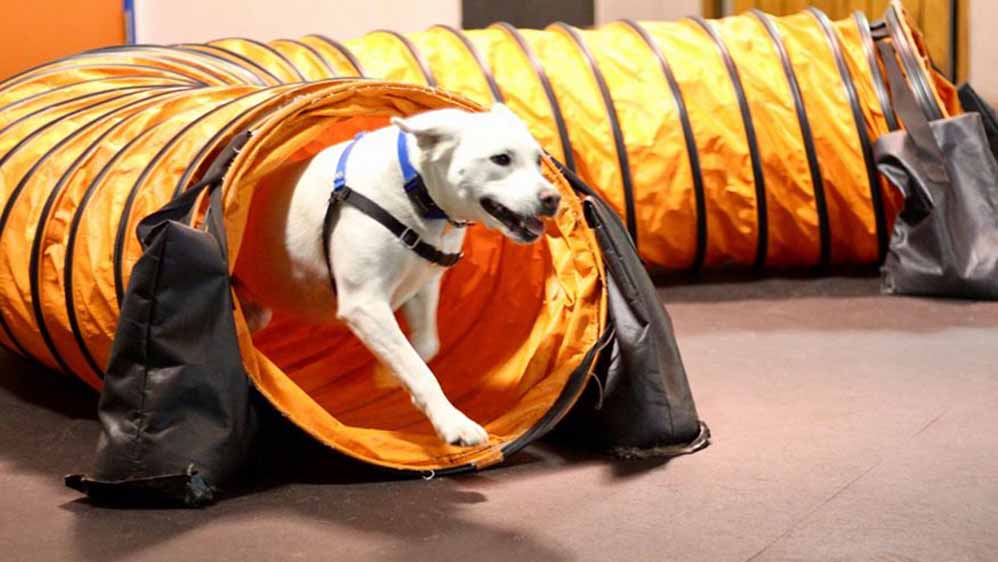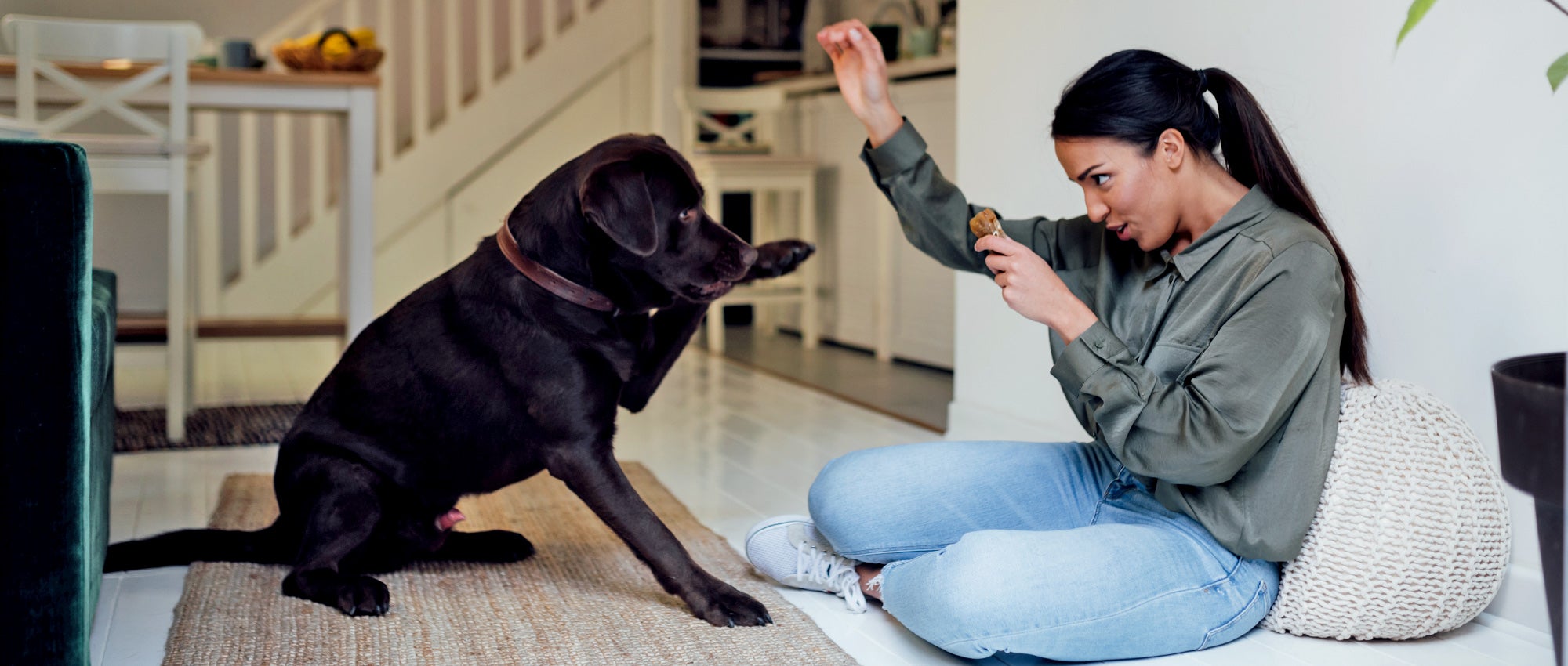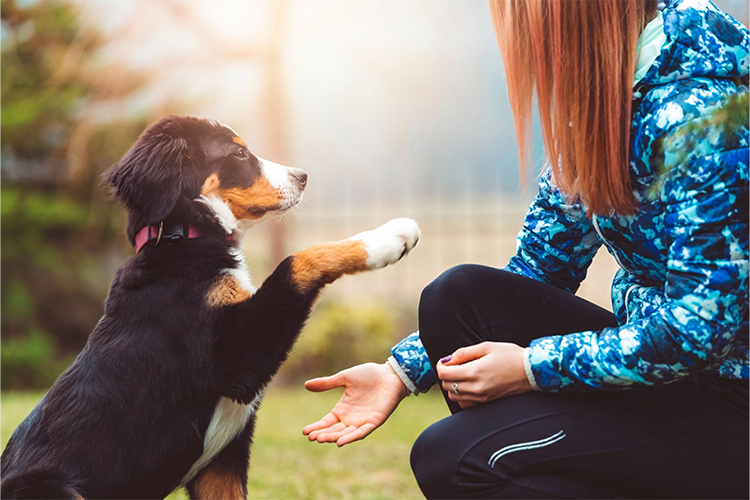Just how to Select the Right Approach for Successful Dog Training
Just how to Select the Right Approach for Successful Dog Training
Blog Article
Essential Tips for Successful Dog Training: An Overview for Pet Dog Owners
Reliable pet dog training is a multifaceted procedure that needs a tactical approach customized to both the animal's temperament and the proprietor's objectives. Recognizing exactly how to navigate these barriers can considerably boost the training experience, eventually transforming the partnership between proprietor and canine.
Recognizing Dog Behavior
Comprehending dog actions is vital for effective training and promoting a harmonious connection between dogs and their proprietors. Pet dogs connect mainly via body language, articulations, and actions, making it critical for owners to analyze these signals accurately. Acknowledging a dog's pose, tail position, and ear alignment can offer understandings into its emotional state. As an example, a wagging tail does not always indicate joy; it can additionally signal enjoyment or anxiousness.

Socializing plays a considerable function in pet dog habits; exposure to various environments, individuals, and various other pets can dramatically influence a pet dog's character. Moreover, elements such as breed qualities and individual personality need to assist training techniques, as some breeds may have specific behavior qualities that require tailored approaches. By comprehending these elements, proprietors can develop a helpful environment that urges positive behavior, causing successful training results and a much deeper bond with their pet dogs.
Establishing Constant Commands
Reliable communication with your dog starts with establishing consistent commands. This foundational aspect of training is important for fostering understanding in between you and your family pet. Consistency in the commands you make use of guarantees that your pet can dependably connect specific words or expressions with the desired habits.
When picking commands, pick clear, unique words that are easy to separate and claim from each other. Prevent using similar-sounding commands that may perplex your dog. Using "sit" and "stay" is proper, yet "sit" and "hit" can lead to misunderstandings.
In addition, maintain the exact same tone and quantity for each and every command. Dogs are delicate to vocal cues, so varying your tone can develop complication.
It is just as vital to ensure that all member of the family get on the same web page pertaining to the commands made use of. A united front in command usage will protect against combined signals and strengthen the knowing process.
Favorable Reinforcement Methods
The power of positive support in pet dog training lies in its ability to urge wanted behaviors through incentives and appreciation. This method is grounded in the principle that actions complied with by desirable end results are a lot more likely to be duplicated. By integrating positive support into your training regimen, you can properly shape your dog's habits in a useful manner.
To apply positive support, it's important to determine what motivates your pet dog, whether it be treats, playthings, or verbal praise. When your dog does a desired activity, such as remaining on command, quickly compensate them with a reward or love. This association between the command and the positive result reinforces their understanding.
It's dog training essential to timing the benefits properly; supplying the support within seconds of the wanted behavior assists your dog make the connection (dog training). In addition, uniformity is crucial-- guarantee that all household participants use the very same commands and reward systems to prevent complication

Slowly, you can reduce the frequency of treats as your pet learns the habits, transitioning to applaud or recurring incentives. This technique not only fosters a strong bond in between you and your canine yet additionally promotes a favorable understanding environment, making training a delightful experience for both.
Socialization and Interaction
Constantly revealing your canine to a range of atmospheres, people, and various other pets is critical for their social growth. Socializing should begin early, ideally during the crucial window of 3 to 14 weeks, when puppies are most receptive to new experiences. Older canines can also benefit from ongoing socialization efforts.
Introduce your pet dog to various setups, such as parks, pet-friendly shops, and urban areas. This direct exposure helps them adjust to different stimuli, lowering anxiousness and anxiety feedbacks. Urge favorable interactions with other dogs and people, ensuring that these experiences are regulated and risk-free to try these out promote self-confidence.
Make use of organized playdates with courteous dogs, as this can boost your pet dog's social skills and teach them appropriate actions. Obedience courses and training sessions likewise give superb chances for socializing, permitting your canine to interact with others in a monitored atmosphere.
Monitor your pet's body language during communications, as this will aid you evaluate their convenience level. Gradually boost exposure to even more tough circumstances while making certain that each experience declares. A well-socialized pet is more probable to show balanced actions, making them a pleasure to have in any type of setup.
Attending To Common Training Obstacles
Every pet proprietor will experience training challenges at some time, no matter their pet's age or socializing level. Determining typical concerns such as stubbornness, distractions, and fearfulness can assist in creating reliable strategies for improvement.

Slowly introduce interruptions as the canine becomes more proficient in commands. Short, constant training sessions are additionally efficient in preserving attention.
Fearfulness can prevent a pet's discovering procedure. Progressive desensitization to the source of fear, coupled with positive reinforcement, can aid relieve anxiety. Perseverance is essential; hop over to these guys never require a canine into a scenario that triggers distress, as this may worsen the problem.
Ultimately, understanding and resolving these common difficulties with a structured method will certainly cultivate an extra effective training experience, strengthening the bond between canine and owner while advertising efficient learning.
Verdict
In summary, effective canine training counts on a thorough understanding of canine habits, the facility of constant commands, and the application of favorable reinforcement methods. Socialization plays a critical function in creating well-adjusted animals, while resolving common training difficulties requires persistence and flexibility. By executing these essential methods, pet dog owners can promote a solid bond with their canines and advertise desirable habits, ultimately causing a harmonious connection in between people and their canine companions.
Recognizing canine behavior is vital for efficient training and promoting a harmonious connection in between dogs and their proprietors.Socialization plays a considerable duty in canine habits; direct exposure to different settings, individuals, and other pets can considerably influence a pet's character.The power of favorable support in canine training exists in its capacity to encourage wanted habits via incentives and praise. By incorporating positive support into your training regimen, you can successfully form your dog's habits in a positive fashion.
In summary, effective pet dog training depends on a detailed understanding of canine habits, the establishment of constant commands, and the application of positive reinforcement techniques.
Report this page